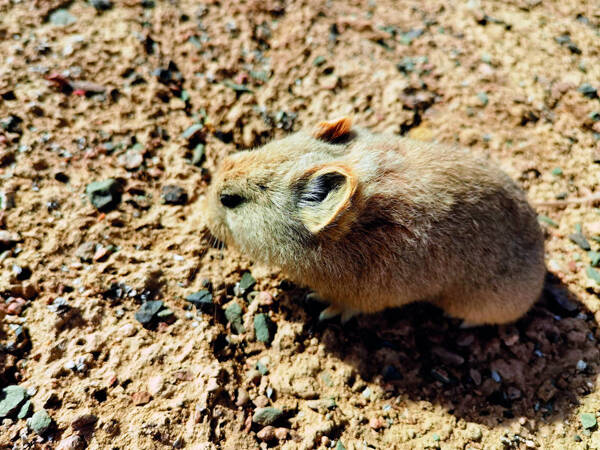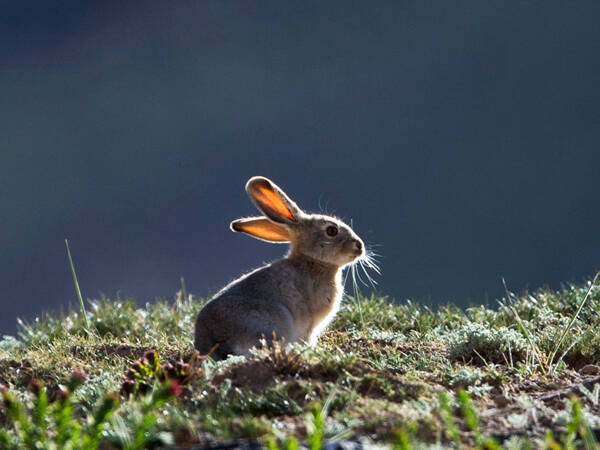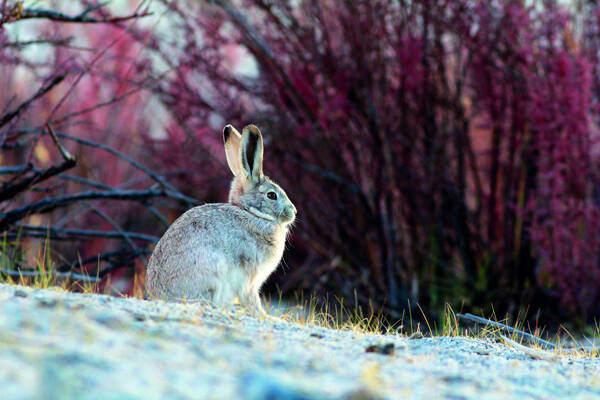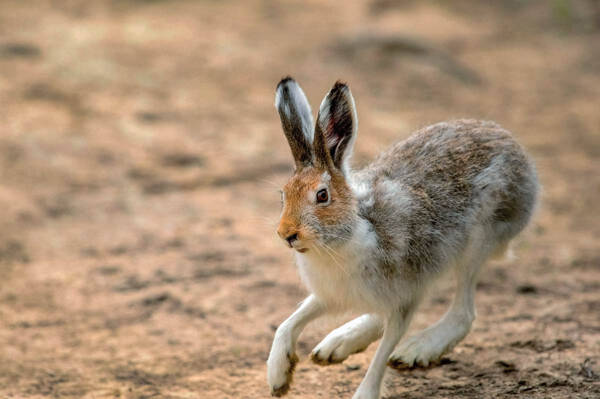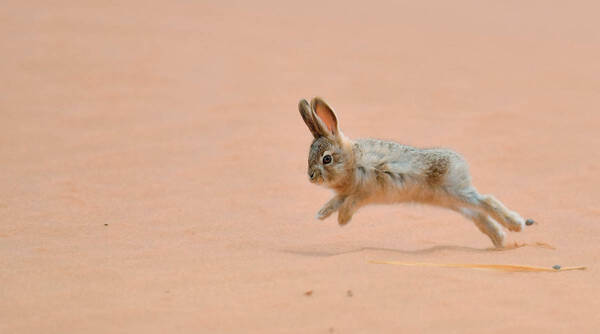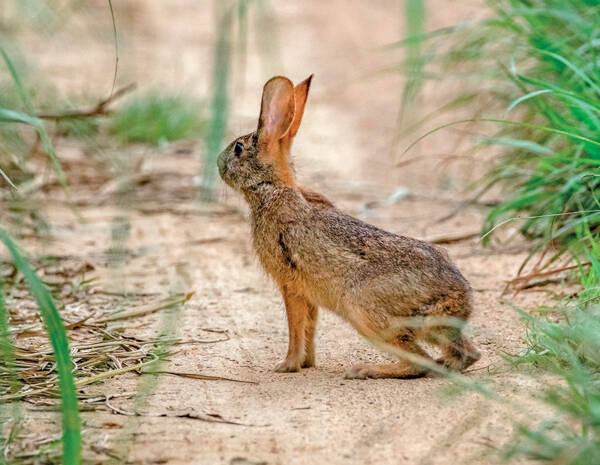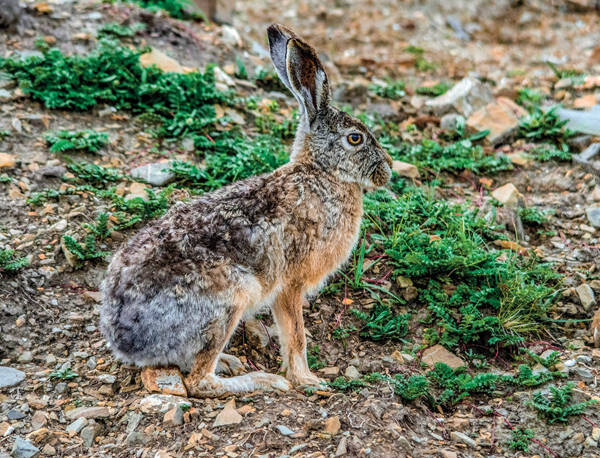Lepus mandshuricus
IUCN
LCBasic Information
Scientific classification
- name:Lepus mandshuricus
- Scientific Name:Lepus mandshuricus,Grass rabbit, mountain rabbit, black rabbit, mountain jump
- Outline:Lagoiformes
- Family:Lagomorpha Leporidae Lepus
Vital signs
- length:40-55cm
- Weight:1.3-.2.5kg
- lifetime:
Feature
The distinctive feature is the striking black tint. Some individuals have a slightly dark rusty brown color.
Distribution and Habitat
In China, it is distributed in northeastern Inner Mongolia, Heilongjiang and northeastern Jilin. Abroad, it is distributed in Russia.
The Northeastern rabbit mainly lives in coniferous and broad-leaved mixed forests at an altitude of 300-900m. It is also found in wasteland grass and river valley shrubs in the plains outside the forest. It is also common in mixed forests dominated by broad-leaved forests with low canopy density and sufficient light. The Northeastern rabbit has not been found in pure coniferous forests, and it does not move around in residential areas.
Appearance
The size is medium to above average. The back of the winter coat is generally light brown-black. The head, forehead and between the eyes are darker, brown-black. The ears are also short, less than 100mm. The chest, belly and upper legs are cinnamon-colored. The belly is white. The ears are reddish-brown. The back of the tail is brown-black. The belly is dark white. The skull is similar to other rabbits, with only some minor differences.
Details
This species is controversial in classification. It was once considered to be the Northeast Black Rabbit (<Ochotona melaninus>) and was also included in the Japanese Short-tailed Rabbit (<Lepus brachyurus>). It mainly lives in forests. It is herbivorous and sometimes eats tree bark.
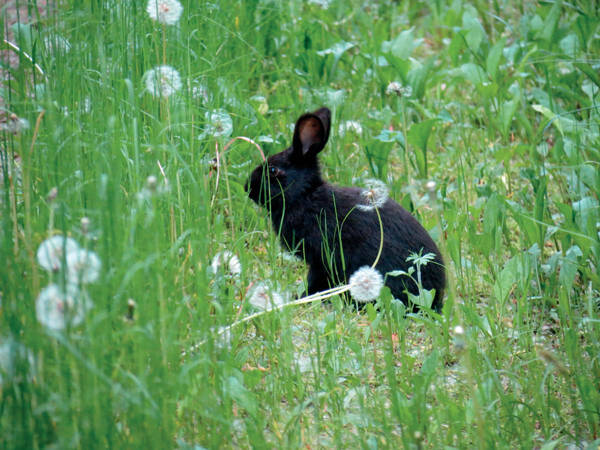
Northeastern rabbits are good at running and jumping. They usually have no fixed nests. They only have fixed residences when giving birth. When giving birth, they make nests in depressions, bushes, weeds, and under fallen trees. Like grass rabbits and snow rabbits, Northeastern rabbits mostly live in bushes, weeds, fallen trees, or under tree roots during the day and come out to forage at night.
The Northeast rabbit mainly eats the young shoots of woody plants and the stems, leaves, bark and tender branches of herbaceous plants. The undergrowth and dense herbaceous plants provide them with a good hiding environment and sufficient food conditions.
The main natural enemies of the Northeast rabbit are wolves, foxes, minks, leopard cats, owls, eagles, falcons and other animals.
Northeast rabbits begin to breed in April and give birth in May. The gestation period is about one month. Each female rabbit gives birth to 3-6 pups. When the female rabbits are in the lactation period, they often cover the hole with weeds or soil when foraging. Except for foraging, they lie in the hole to feed the young rabbits. The young rabbits can live independently at the age of one month.
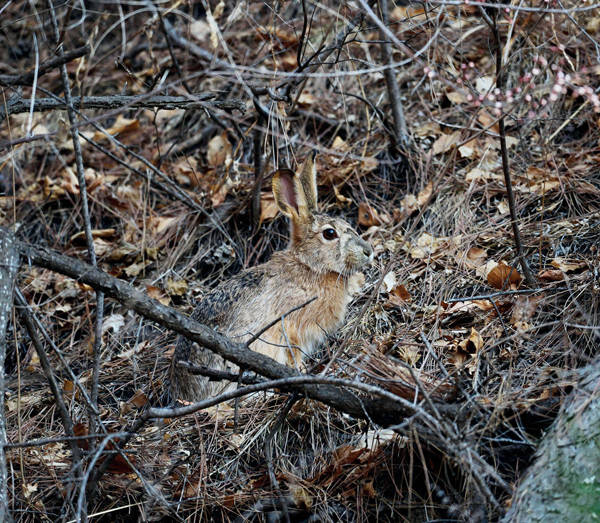
The quality of Northeast rabbit fur is not very good. After tanning, it can be used as a hat with good thermal insulation performance. The annual output is not large. After being captured, most of them are eaten by themselves. The taste is quite delicious. 20,000 to 30,000 skins can be purchased each year, but the actual number of captures is much larger than this number. This resource should be used rationally in a planned and organized manner.
Northeast rabbits also chew tree bark, which is harmful to forestry.
Listed in the 2008 Red List of Endangered Species of the World Conservation Union (IUCN) ver 3.1 - Least Concern (LC).

